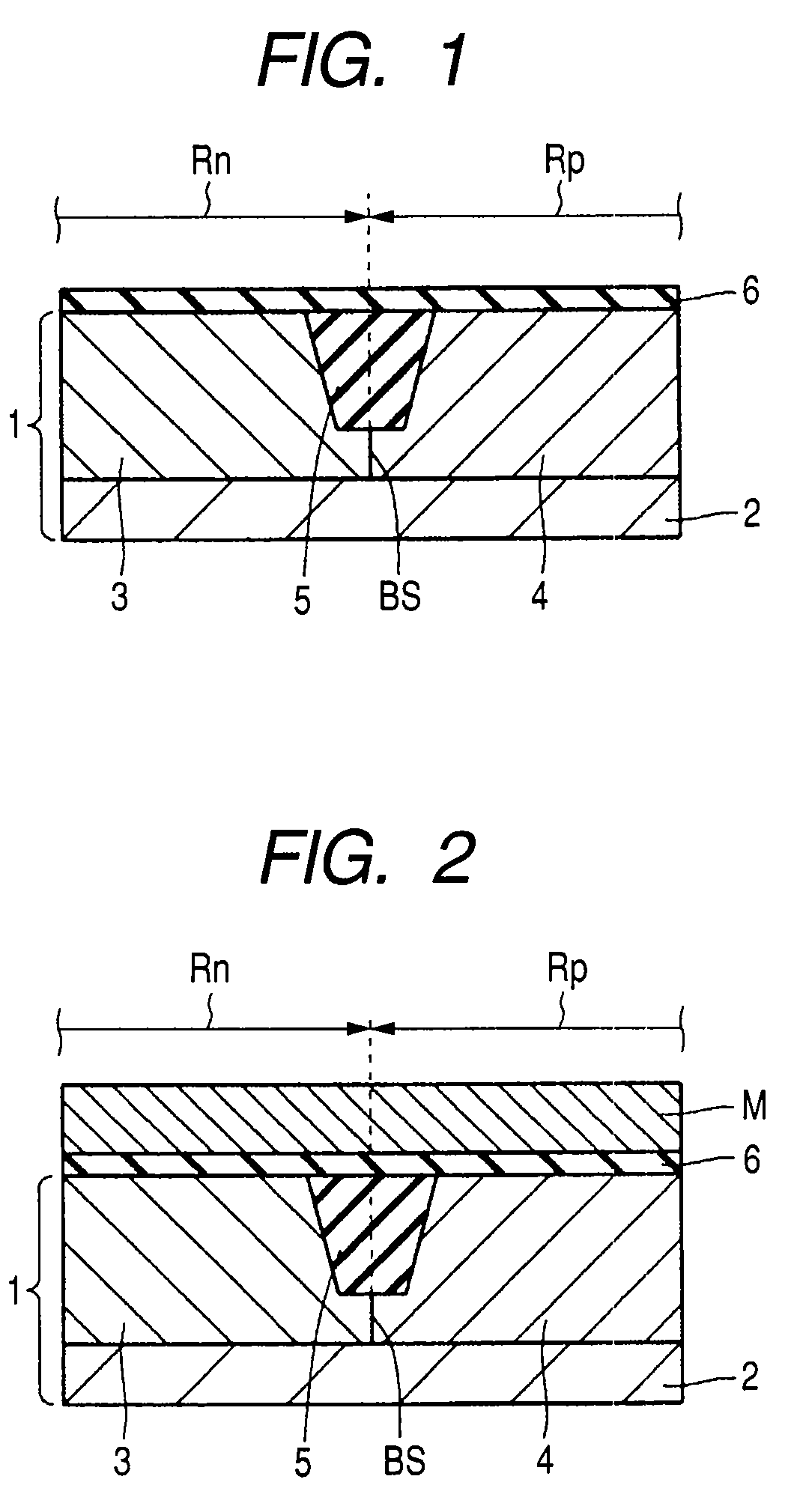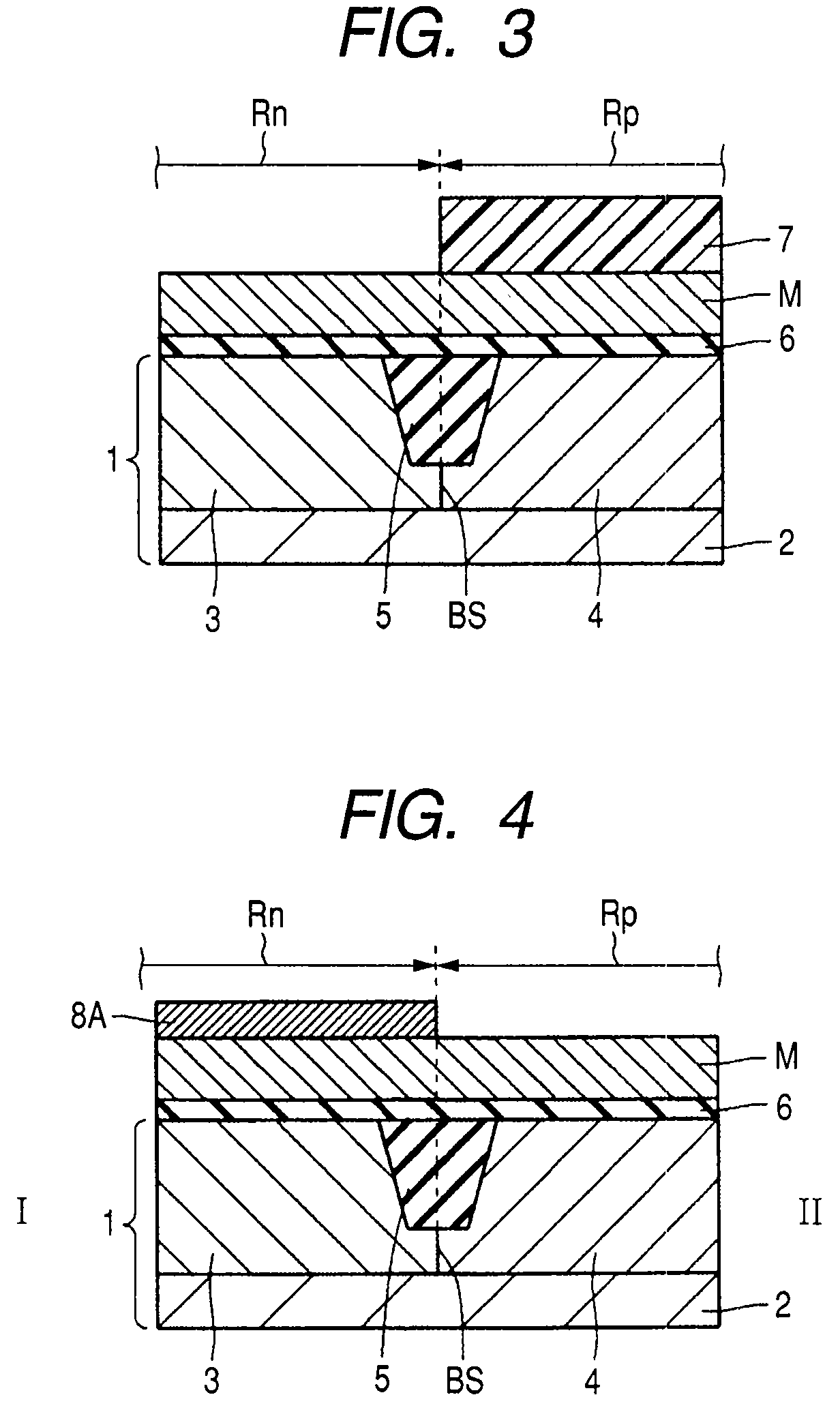Semiconductor device and manufacturing method of the same
a technology of semiconductors and manufacturing methods, applied in the direction of transistors, basic electric elements, electric devices, etc., can solve the problems of gate electrodes obtained, production process also becomes difficult inevitably, and the control range of the threshold voltage is widened, so as to prevent the deterioration of the insulating layer during the formation of the second cap layer, the effect of preventing the reduction of the reliability of the insulating layer
- Summary
- Abstract
- Description
- Claims
- Application Information
AI Technical Summary
Benefits of technology
Problems solved by technology
Method used
Image
Examples
first embodiment
[0102]Then, as in the first embodiment, a poly-Si layer is deposited to give a thickness within a range of from 30 to 120 nm and each gate electrode of the pFET and the nFET is processed by dry etching or the like. Also in this embodiment, use of the same main material for the gate electrodes of the nFET and the pFET facilitates processing of the gate electrodes. As a result, as illustrated in FIG. 12, a dual gate electrode structure, in which the gate electrode of the nFET has a stack structure of the gate-electrode metal film M and the poly-Si layer 10 and the gate electrode of the pFET has a stack structure of the p-side gate-electrode metal film MB and the poly-Si layer 10, is formed.
[0103]As in the first embodiment, ordinary process flows for CMOS formation are conducted successively to complete the CMOS.
[0104]Also this embodiment does not require formation of the poly-Si layer 10.
[0105]As described above, according to this embodiment, a CMOS permitting operation of the nFET an...
second embodiment
[0111]As in the first or second embodiment, ordinary process flows for CMOS formation are conducted successively to complete the CMOS.
[0112]As described above, according to this embodiment, a CMOS permitting the nFET and the pFET to operate at desired threshold voltages, respectively can be formed easily with accuracy by having a dual gate electrode structure in which the gate electrode GE of the nFET has the n-side gate-electrode metal film MA and the gate electrode GE of the pFET has the p-side gate-electrode metal film MC, thus having work functions different from each other. In particular, since main materials used for the gate electrodes are the same between the nFET and the pFET, the gate electrodes can be processed more easily by etching or the like. This enables improvement in the processing accuracy of a minute gate electrode. In addition, a step of removing the gate electrode from one channel region which is employed in the conventional hybrid metal gate electrode structur...
third embodiment
[0120]When the present embodiment is applied to the method of the third embodiment illustrated in FIGS. 13 and 14, an n-side gate-electrode metal film MA and a p-side gate-electrode metal film MC are formed as illustrated in FIG. 14, followed by the formation of a second gate-electrode metal film N over the entire upper surfaces of the n-side gate-electrode metal film MA and the p-side gate-electrode metal film MC as illustrated in FIG. 24.
[0121]When the present embodiment is applied to the method of the third embodiment illustrated in FIG. 15, after formation of the n-side cap layer 8A and the second p-side cap layer 8C as illustrated in FIG. 15 but prior to diffusion of the n-side cap layer 8A and the second p-side cap layer 8C, a second gate-electrode metal film N is formed over the entire upper surfaces of the n-side cap layer 8A and the second p-side cap layer 8C as illustrated in FIG. 25.
[0122]As described above, the present embodiment can provide the following advantages. Fir...
PUM
| Property | Measurement | Unit |
|---|---|---|
| thickness | aaaaa | aaaaa |
| thickness | aaaaa | aaaaa |
| thickness | aaaaa | aaaaa |
Abstract
Description
Claims
Application Information
 Login to View More
Login to View More - R&D
- Intellectual Property
- Life Sciences
- Materials
- Tech Scout
- Unparalleled Data Quality
- Higher Quality Content
- 60% Fewer Hallucinations
Browse by: Latest US Patents, China's latest patents, Technical Efficacy Thesaurus, Application Domain, Technology Topic, Popular Technical Reports.
© 2025 PatSnap. All rights reserved.Legal|Privacy policy|Modern Slavery Act Transparency Statement|Sitemap|About US| Contact US: help@patsnap.com



